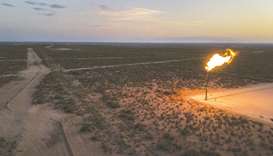In Eastern Mediterranean, resolving maritime boundary disputes becomes key

The Eastern Mediterranean currently sits atop a veritable sea of potential. Energy discoveries in the past decade have transformed both economic and geopolitical perspectives of the region. With some experts making comparisons of the proven reserves ranging from the North Sea to Iraq, the region is widely regarded as a ‘next big thing.’ Large-scale projects and infrastructure agreements are already underway that will bring outside investment, needed financial windfalls, and rapid development.
Politically, partnerships have been established that foster needed intra-regional cooperation. Both Brussels and Capitol Hill have turned their eyes toward the Eastern Mediterranean. States from outside the region such as Quai d’Orsay and the U.S. State Department have sought to elevate engagement in the region. All this brings hope for the possibility of a bright and cooperative future for the Eastern Mediterranean.
However, the onset of hydrocarbon diplomacy in the Eastern Mediterranean is accompanied by a counterpart gunboat diplomacy. Firebrand rhetoric and tense foreign policy threatens to negate opportunities at hand. The region experiences increasing militarization as warships accompany drillships on exploration, or are sent from other countries, and alarming arms procurements and military exercises are conducted. Rivalry threatens to take away hard-won progress toward cooperation and instead manifest deadlock and contests in which there is no winner.
At the heart of these tensions is the ongoing dispute over regional maritime boundaries. Of the 13 maritime boundaries in the Eastern Mediterranean, 11 of them remain unresolved or disputed. Inclusive and equitable resolution of such disputes is of urgent importance if the Eastern Mediterranean is to successfully realize its projects, attract further investment, and formulate lasting ties that bind among neighbors.
Disagreements over maritime boundaries occur precisely because of the economic opportunities within the waters. Rather than using the potential windfalls as a launching point for closer ties, the region’s neighbors have felt undercut in the full extent of their Exclusive Economic Zone (EEZ) or excluded from consultation. This isn’t necessarily always due to coercive action from another state; the most internationally agreed-upon method for defining maritime boundaries and a country’s EEZ is in and of itself undefined, and always situational.
At the same time, one can only imagine the immense achievements that could follow boundary resolution in the Eastern Mediterranean. Delimitation would build upon the commendable efforts of actors inside and outside the region to use hydrocarbon discoveries as a launching point for reconciling political differences, and working together on deals that benefit all associated. Resolution would remove obstacles to windfalls so desperately needed in the region. It would empower the countries of the Eastern Mediterranean to take ownership in building a concrete framework for intra-regional development.
Without the stronger ties built by cooperation, the countries of the Eastern Mediterranean become sitting ducks to exogenous shocks, particularly given the ongoing COVID-19 crisis. Following the pandemic and its immense health concerns is a grim economic outlook that has world markets entering a recession and oil dropping to an 18-year low. Amid this, many members of the international community have drawn together to prevent the spread of the virus, provide medical assistance, and to persevere. The countries of the Eastern Mediterranean can learn their lesson from this exemplary leadership; the time to stop goofy behavior in the Eastern Mediterranean is now, before halted investment or receding prices cripple the markets.
Understanding the need in the region and the potential that awaits the precise resolution of equitable delimitations, how is that best achieved? Energy executive Roudi Baroudi offers up the United Nations Convention on the Law of the Seas (UNCLOS) as a pathway to this achievement in his expert commentary and seminal work, soon to be published by the Transatlantic Leadership Network and distributed by Brookings Institution Press.
Using precise satellite imagery produced by the maritime boundary software used by the UN and by international courts and tribunals, Baroudi makes the following contention: when followed with a by-the-book approach, inclusive of all associated actors, and gaining precedent from successfully-resolved maritime issues, UNCLOS can be an effective tool in reaching legal certainty and mutual agreement of boundary conflicts in the Eastern Mediterranean.
Whatever the solution may be, the independent international legal experts on maritime borders must be engaged through an equally independent and preferably US-based platform to address best ways to link the methods of delimiting contentious areas to achieve equitable outcomes that UNCLOS has not fully addressed, allowing judicial decisions on best methods available.
Exclusion, unilateral decision-making, and aggression will only maintain, if not intensify, the status quo.
Characterization of the Eastern Mediterranean must go beyond the dispute and conflict to include the opportunities awaiting it. Many actors are already beginning to do their part and must be celebrated for it. Coming to inclusive agreements on energy exploration holds immense potential for the region.
Jonathan Roberts is a researcher at the Transatlantic Leadership Network in Washington DC.Ambassador
John B. Craig is a senior fellow at the Transatlantic Leadership Network in Washington D.C., former Special Assistant to the President for Combatting Terrorism under Bush 43, and former United States Ambassador to Oman.
https://thehill.com/opinion/international/492341-as-eyes-turn-to-the-eastern-mediterranean-resolving-maritime-boundary








